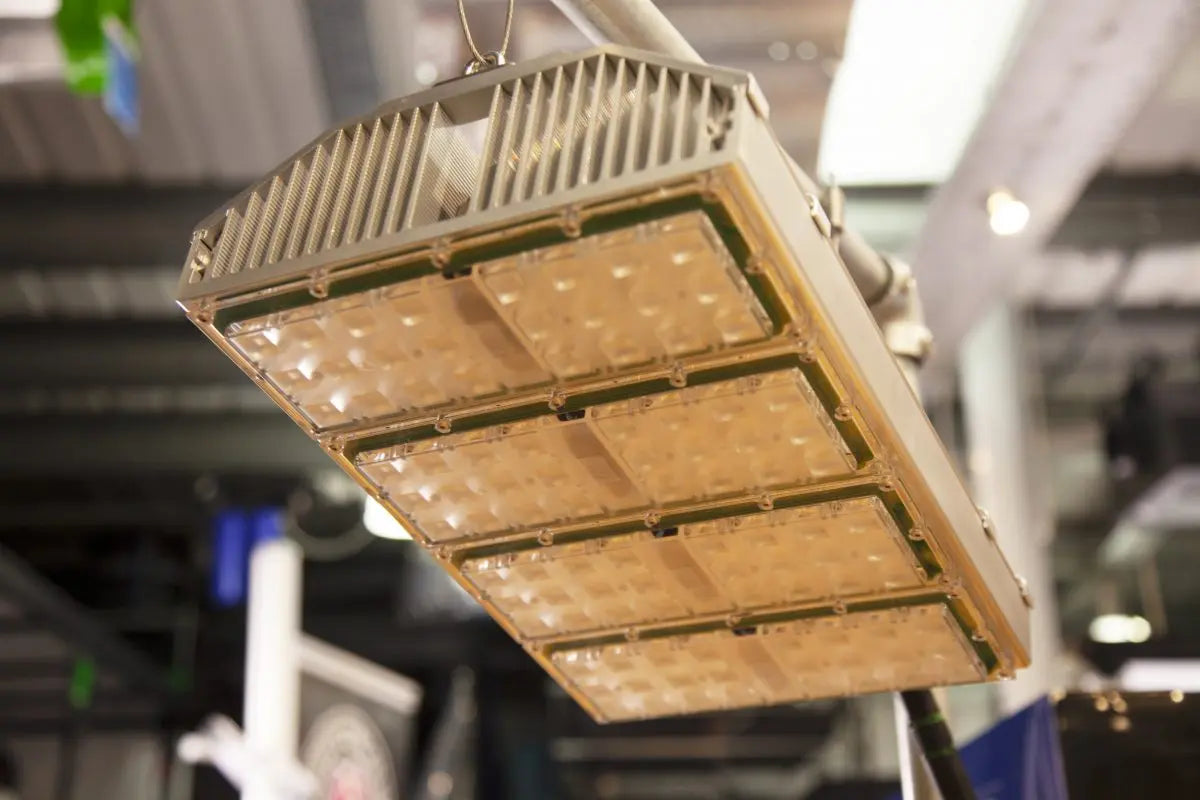LED Grow Lights – We Compare Models Around the 240w to 300w Level.
Not everyone wants to grow in a standard 1.2m square grow tent. That may be because of space limitations or because the cost of the power that the lighting would require would be higher than they want to spend.
In this article we take a look at the latest version of LED grow lights that are suitable for a slightly smaller grow tent, such as a 1m x 1m.
Component LEDs have come on leaps and bounds in recent years. The results of extensive research by companies such as Samsung and Osram, has culminated in LEDs which are almost twice as efficient than they were 5 years ago.
We will take a look at 3 suitable grow lights for such a situation which are the latest models to come on to the market.
There are 3 main factors when comparing grow lights. First is the total amount of light that they produce for each watt of electricity that they use. This is called the Photosynthetic Photon Flux, or “PPF” and is measure in mols/Joule. Joules are a measurement of energy. Watts are the rate of use of energy. 1 watt of power equates to the use of 1 Joule per second.
This Second is the footprint or “spread” that they put down. It is pointless having a grow light that produces a huge amount of light if it goes directly down into a small area directly beneath it. If you are using a 300w grow light in a 1m x 1m grow tent, then you will want enough light reaching the edges and corners of the tent for plants to be productive in those parts.
The third thing to look at is the light spectrum. Red light is the most productive colour which is why the orange-red light of an HPS was the grower’s choice for very many years. The blue part of the spectrum helps keep plants short and encourages terpene and essential oil production. It is important to have enough blue in the spectrum for vegetative growth too. The middle of the spectrum is cyan, green and yellow. These help to encourage good plant structure and plant health. Green also penetrates lower into the canopy than the other colours and, yes, it can be used by plants!
So, here’s a quick run-down of the 3 led grow lights that we will be comparing:
- The Grow Northern (GN) Telos 0010 has recently been updated into the “Pro” version (285w) £499.95
- The SANlight Q6W which has recently been upgraded to Gen 2 (245w) £569.95
- The new Maxibright Daylight LED (300w) £374.95
The prices are correct at the time of writing.
The Grow Northern Telos 0010 was always a great grow light even in its Version 1 guise. Producing 2+ µmols/Joule which is pretty much the same as the best 400V, double-ended HPS lights. GN have now released the Pro version which delivers 25% more light for the energy that it uses (i.e. 2.5 µmols/Joule). The GN Telos Pro 0010 features a revised spectrum with a greater proportion of red light which will increase the flowering response:
The SANlight Q6W has recently been upgraded to Generation 2 and now uses another 30 watts (245w rather than the 215w of the original). The length of the unit has also increased to give better front to back coverage. The SANlight produces the most light for the energy it uses at an impressive 2.7 µmols/Joule. The SANlight has a similar spectrum to the GN Telos. This is not really surprising because it is very successful. We are seeing more and more LED grow lights adopting something similar to this spectrum. The SANlight is one of the LED grow lights out there that includes some far-red light in there too. Unsurprisingly, it produces healthy plants, big crops and great quality:
Here is the Footprint over a 1.2m square area. It doesn't quite have the coverage of the Telos, but remember it uses 40 fewer watts:
The Maxibright 300w (and 200w) LED grow lights are the new kids on the block. As the cheapest of this group, it produces 2.3 µmols/Joule. However the layout of the LEDs in this unit means that the spread is excellent. First of all, though, let's have a look at the spectrum. It includes quite a lot of white light but it includes enough red (and some far-red) for good flowering and lots of blue for great quality:
As discussed before, the spread is very good. Here is the footprint over a 1.2m square area:
Conclusions:
The SANlight Q6W V2.1 has the best spread of this group, and it is also the most efficient. However, it is also the most expensive.
The GN Telos 0010 has a very good spread and represents savings in money compared to the SANlight. Here the customer needs to weigh up their priorities in terms of efficiency and cost of initial investment in the unit.
The Maxibright Daylight 300w is less efficient than the other two. However it is significantly cheaper. The spectrum is, perhaps, more suited to propagation or vegging than flowering. However, for a low cost small setup it is great value-for-money and should delight customers with the yield per £ investment that it will produce.

